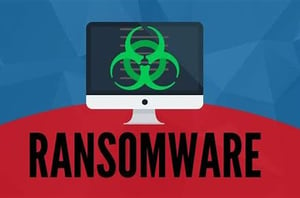The growth of r ansomware continues, leaving many cybersecurity experts to wonder if there will ever be an end? The numbers for 2021 do not paint a good picture. Sophos says the average ransomware payment has increased to $812,260 compared with the 2020 average of $170,000. Worse still, the number of ransoms over $1 million has risen to 11% up from 4% in 2020.
ansomware continues, leaving many cybersecurity experts to wonder if there will ever be an end? The numbers for 2021 do not paint a good picture. Sophos says the average ransomware payment has increased to $812,260 compared with the 2020 average of $170,000. Worse still, the number of ransoms over $1 million has risen to 11% up from 4% in 2020.
Despite these increases, some cybersecurity experts believe there is hope. Organizations such as CISA, NCSC, as well as the “No More Ransom” group have been providing guidance and resources to organizations to help prevent ransomware. Sophos’ principal research scientist Chester Wisniewski, told ZDNet, "I don't think enough organizations are listening to them yet, but at least the resources are accessible, approachable and usable, so it's a good start."
Additionally, the growth of the cyber insurance industry may also be contributing to better cybersecurity practices at some organizations. Most cyber insurance companies require organizations have their cybersecurity in place before they are eligible for insurance. Many cyber insurance companies have also publicly stated that their insurance does not cover ransomware payments but costs incurred for IT recovery and litigation.
While some of these shifts are encouraging, the fact that ransomware criminals can still receive a $1 million payout means that there is still a lot of work to do to put an end to ransomware. So long as cybercriminals can continue to make this kind of money, ransomware will continue. To help protect your organization from ransomware, remember the following:
- Always backup your data offsite and offline. This way you can always restore your data from the backups rather than pay for a decryption key.
- Patch systems vulnerabilities as quickly as possible. Cybercriminals will always be looking for these vulnerabilities to launch ransomware. ZDNet wrote an article about a company that was attacked via an unpatched 3-year-old vulnerability. While it is impossible to patch everything right away, 3+ years is too long.
- Enable multifactor authentication on all systems and accounts to reduce the risk of account takeover.
- Make cyber awareness training mandatory for all individuals who use the network in your organization.
Following the four steps may not make you 100% immune to a ransomware attack but will ensure that you do not have to pay a ransom. To get help with these four steps, contact the cybersecurity experts at Quick Intelligence.
